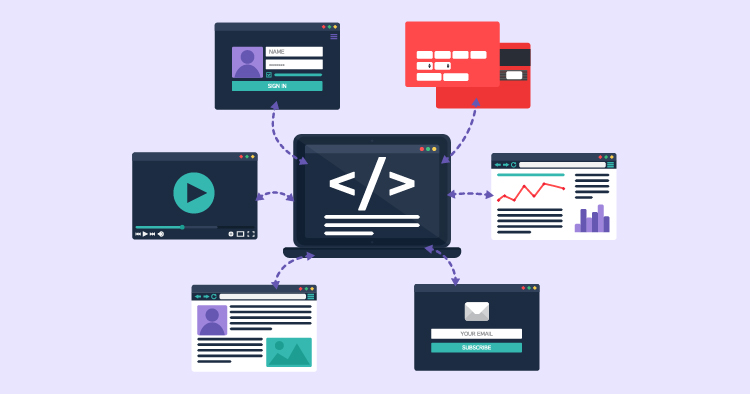Starting a web development project can seem overwhelming, but with careful planning and understanding of the time needed, you can set yourself up for success. Knowing how long each step should take is critical to managing expectations and ensuring everything runs smoothly. You’ll need to consider all the different phases, from the initial idea and designing the site to testing it and making it live. It’s also wise to plan for any unexpected issues so you can handle them without too much trouble. Let’s dive into what you must consider when creating a realistic timeline for your web development project and how to stay on track.
Understanding the Project Scope
When you start a web development project, the first thing to do is figure out what you need and want to accomplish. Think about the main reason for your website. Is it to sell products, provide information, or showcase your work? Knowing this will guide you in deciding what features your site must have.
You’ll need to list the specific things your website requires to serve its purpose. For example, you’ll need a shopping cart system if you sell products. If you’re showcasing a portfolio, you might want high-quality image galleries. Understanding these needs is vital because it helps you estimate how long it will take to build your website.
Setting Clear Objectives
Having clear goals for your web development project is like having a roadmap. It helps you know where you’re going and what you want to achieve. For example, you might set a goal to get a certain number of people to sign up for your service by a specific date or to have a particular feature ready to go live in time for a big event.
Ensuring these goals fit well with your overall business plan is essential. If you have a big marketing push coming up, you might want your website ready to go by then to take full advantage of the campaign. By aligning your web development goals with your business strategies, you help ensure your new website supports and enhances your business efforts.
Conducting a Thorough Research and Planning Phase
When you’re starting a web development project, it’s like preparing for a long journey. It would be best to have a good map and the right supplies. Doing your homework at the beginning can save you time and trouble later on. This means you should look at other websites, especially the ones similar to what you want to create. Explore what makes them work well and identify areas for improvement. This will give you a clearer idea of what you’re aiming for with your website.
Understanding who will use your website is also essential. What do they need? What do they like? Knowing your audience helps you create a site that’s useful and appealing to them. Plus, you’ll need to gather all the content—like text, images, and videos—you want on your site. Having everything ready before you build means fewer delays.
It’s also wise to look at what your competitors are doing. You can learn a lot about what to do and avoid by analyzing their websites. This way, you can set realistic goals for your site and ensure it stands out.
Select one of over 500 designs and establish your online presence.
- Free Web Hosting
- Fully Managed Solutions
- Scalable Websites
- No Hidden Cost
Collaborating with the Web Development Team
Choosing the right people to build your website is as important as planning. You want a team that knows what they’re doing and can finish the job on time. Look for developers with an excellent reputation and impressive portfolio. Their skills and experience will be crucial to the success of your website project.
Once you’ve got your team, keeping the lines of communication open is crucial. Use project management tools and set up regular check-ins to see how things are going. This way, everyone knows what to do, and you can catch any issues early. Transparent feedback and a good working relationship with your developers will help keep your project moving smoothly toward a great final product.
Allocating Time for Design and User Experience
When building a website, think of it like constructing a house. Before you decorate the rooms, you need a solid blueprint. That’s what wireframes and mockups do for your website. They show where everything will go, from buttons to images, before you add colors and fonts. It’s much easier to spot and fix potential problems when looking at a simple outline.
But a blueprint is not just about walls and ceilings; it’s also about making sure the doors are in the right places, and there’s a flow from room to room. That’s where user experience (UX) comes in. You want to ensure that when someone visits your website, they can find what they’re looking for without getting lost or frustrated. It’s worth spending the time to design a website that’s like a well-planned house, where visitors can move quickly from page to page and enjoy their time inside.
Development and Testing Phase
Imagine you’re putting together a puzzle. You wouldn’t try to do it all in one go; instead, you’d sort the pieces and work on small sections at a time. That’s how you should approach building a website. Break it down into smaller tasks and set a timeline for each one. This lets you track what’s been done and what still needs work. Plus, if something unexpected pops up, like a missing puzzle piece, it’s easier to take a moment to find a solution without throwing off your entire schedule.
Now, think about how many devices and web browsers people use today. Your website must work well on all of them, from smartphones to desktop computers, Chrome to Safari. That’s why testing is so important. You need to check that your site loads quickly, is secure, and provides a smooth experience for every visitor, no matter how they access it. Please consider this phase as quality control, ensuring everything is in top shape when your website opens its doors to visitors.
Content Creation and Integration
Creating content that captivates and informs your audience is critical to a successful website. Your content needs to grab attention and provide real value to your visitors. This means writing articles, blog posts, or descriptions directly related to your audience’s interests and needs. Ensuring the content is exciting and easy to read and understand is essential.
When you integrate this content into your website, it should flow naturally with the design. How you arrange text, images, and videos can make a big difference in how people perceive your site. You want to strike the right balance–the site should look good and make it easy for visitors to find the information they want.
Search Engine Optimization (SEO) Considerations
SEO is about helping people find your website when they’re searching online. To do this, you need to understand what words or phrases they might type into a search engine. This process, known as keyword research, is the first step in SEO. Once you know these keywords, you can use them on your website’s content. But remember, they should fit naturally into your text; forcing them where they don’t belong can turn visitors off.
Select one of over 500 designs and establish your online presence.
- Free Web Hosting
- Fully Managed Solutions
- Scalable Websites
- No Hidden Cost
There’s more to SEO than just keywords, though. You also need to pay attention to other details on your site. This includes writing clear titles and descriptions for your pages, using headings to structure your content, and ensuring your site works well on different devices. Plus, your site should load quickly; having other reputable websites link to yours is helpful. All these factors can help your website rank better in search results, making it more likely that people will find and visit your site.
Quality Assurance and User Testing
Ensuring your website works smoothly is essential. This means checking everything from how it functions to whether it’s easy to use. It’s critical to see how your site looks and works on different web browsers and devices, like smartphones and tablets, and to ensure it loads quickly.
Getting feedback from people who use your site is also crucial. By asking users to try out your website, you can learn much about what works well and what doesn’t. Their suggestions can help you improve your website and make it more enjoyable.
Launching the Website
When you’re ready to launch your website, there are essential things to do to make sure everything’s ready. This includes ensuring all the content is in place, checking that every part of the website is working as it should, and setting up tools to keep track of how your website is doing.
Letting people know about your new website is critical. You can build excitement and get visitors immediately by using marketing and social media to spread the word.
Once your website is live, it’s important to monitor its performance. Look at things like how many people are visiting, where they’re coming from, and whether they’re doing what you want them to do on your site, like buying something or signing up for a newsletter. You might need to help your website do even better based on what you find.
Final Thoughts
As you approach the end of your web development project, it’s a good time to look back and see how well your timeline worked. A good plan helps everything stay on schedule, reduces stress, and can save you money by avoiding delays. Regularly checking your progress and being willing to make changes keeps your project moving in the right direction. The key to a successful web development project is having a doable and flexible timeline, making it easier to move from the drawing board to a live website. A timeline guides you, and the best results come from thoughtful planning and working with your team.



